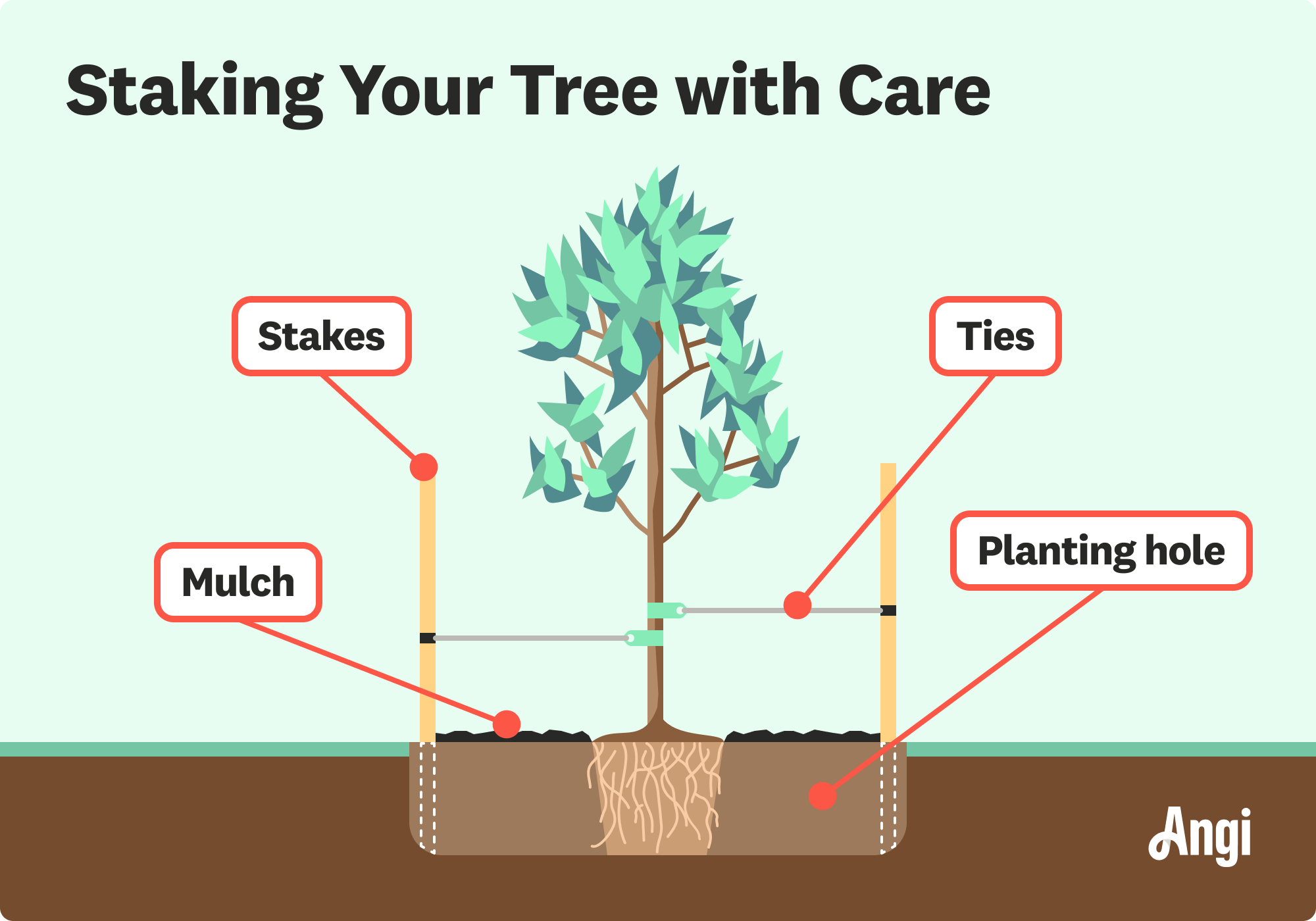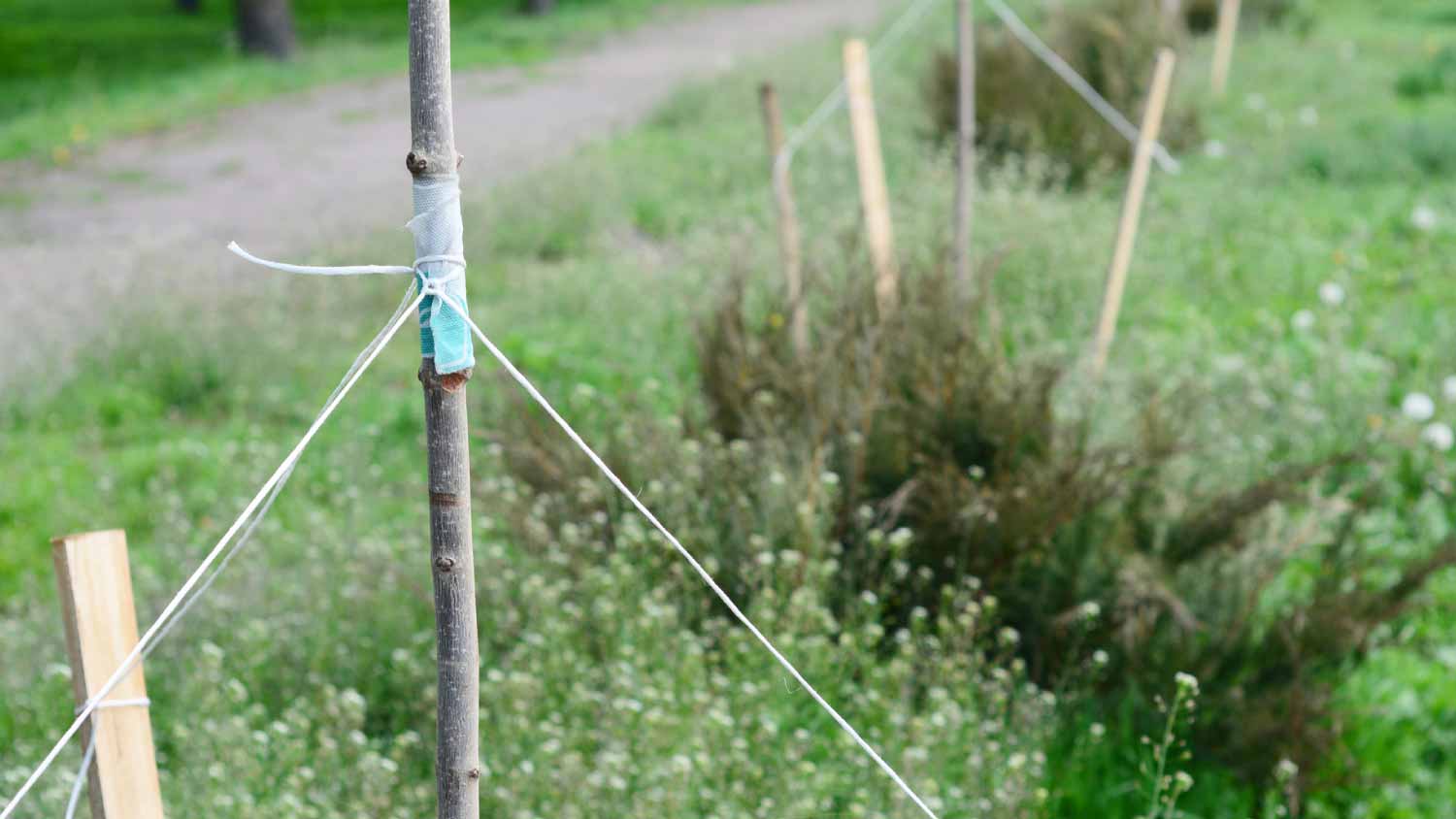
Discover what the current average tree removal cost is based on different factors to know how much it will cost to take care of a dead or troublesome tree on your property.
Help a young tree grow with these foolproof steps


Staking a tree may seem like a simple task, but it plays a crucial role in helping young trees develop strong root systems and grow upright.
A tree maintenance pro knows exactly when and how to stake without damaging the tree, especially in high-wind or high-traffic areas.
A tree maintenance professional can give you an estimate of the cost to stake a tree so you can plan for the expense.
Whether you’re planting new trees or inherited a few that need extra support, learning how to stake trees is the key to healthy growth. Staking trees can help your new plants stand tall and have time to develop a healthy root system. Let’s review why and when you should stake trees, and also how to care for them after the stake is in place.

Not every new or growing tree requires staking, but this process can assist trees that need extra support. In certain circumstances, staking young saplings can help them grow upright, grow a healthy root system, and keep them from falling over during windy or rough weather conditions. However, it’s important to stake the trees correctly as problems can occur if a tree is tied too tight or if the staking material unintentionally damages the trees.
Since staking trees incorrectly can lead to serious damage, it’s essential to know how to identify when trees can benefit from staking. Consider staking your trees in the following circumstances:
Tree is regularly exposed to high winds
Tree is located near heavy traffic
Tree is leaning or not standing upright
Tree’s root ball moves in the soil when the trunk moves
These conditions may benefit from staking as it can provide additional stability, ensure the tree’s roots will be established, and the tree won’t knock over or lean in a dangerous way. You may consider hiring an arborist to inspect your trees to see if they would recommend staking or not.

Now for the fun part—the staking! For this project you’ll need the below tools and materials:
Tools
Measuring tape
Sledgehammer
Wire cutters
Materials
5- to 6-inch wooden stake
25 inches of metal wire
2 hose segments, about 6 to 8 inches long
Measure just outside of the root ball of your tree to determine stake placement. Put your stake parallel to the tree, then drive it one to two inches into the soil with a sledgehammer. Depending on the size of the tree, you may need a few more stakes to secure it properly.
Take metal wire and wrap it around the top half of your stake about three to four times, then walk the other end of the wire toward the tree. Put your hose segment around the trunk of the tree and feed the wire through it, and then secure the opposite end to the stake. Cut off any excess wire.
Keep an eye on your tree and its stake, checking to see if any shifting occurs or if any wear has compromised the bark. You may need to readjust the wire or drive the stake a few inches deeper into the ground if it’s shifted or moved in the ground.
Since it’s best to keep stakes in place for about one year, your job isn’t done once the wire is secure. Instead, you’ll need to regularly check on and maintain the support from the stake for best results.
Follow these tips to care for your growing tree:
Water the tree regularly, keeping soil moist but not saturated
Apply a layer of mulch around the base to keep weeds at bay
Keep an eye out for signs of pest infestation or disease
Prune any dead branches for optimal growth
Remove stakes when tree looks strong enough to stand on its own
Whether you’re a beginning DIYer or a seasoned pro, staking a tree is a fairly easy project to tackle solo. Once you have the materials required for staking, you just need a free hour or so to put the stakes in place to help support your growing tree.
However, if you’d rather leave this task up to a professional, consider contacting your local tree maintenance professional to provide an estimate or treatment plan. Since this is a pretty simple job, you’ll likely pay the most for the labor versus specific materials or tools, which a pro should have handy.
From average costs to expert advice, get all the answers you need to get your job done.

Discover what the current average tree removal cost is based on different factors to know how much it will cost to take care of a dead or troublesome tree on your property.

How much does a palm tree cost? The answer depends on the type of tree, its size, and other factors. Find out how much a new palm tree costs.

Get a clear estimate of palm tree maintenance cost, including trimming, fertilization, and pest control, so you can keep your palms healthy and your budget on track.

What do elm trees look like? Learn how to identify elm tree leaves, bark, and the different types of this picturesque tree with this informational guide.

Arborists define Dutch elm disease as one of the most destructive diseases a tree can catch. Here’s what you can do—from spotting symptoms to treatment.

Trimming shrubs and bushes takes time, patience, and a little sweat equity. Our guide will show you how to trim shrubs and bushes properly.